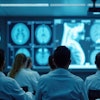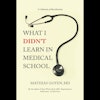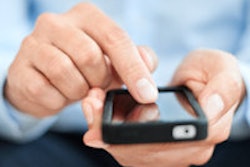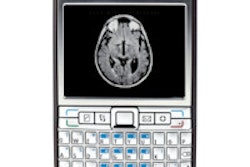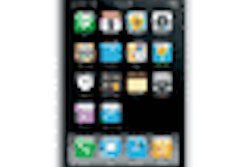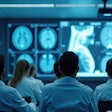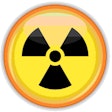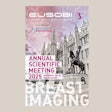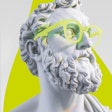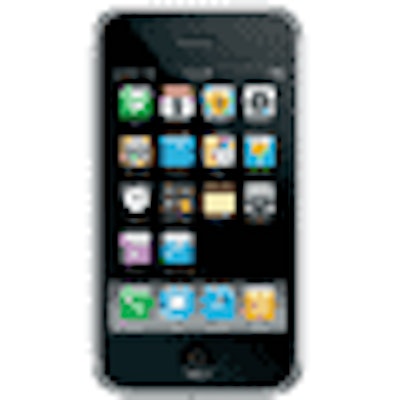
The number of medical apps that have been developed for smartphones and mobile tablets is growing exponentially. But are they being used?
A survey of medical students and junior doctors in the U.K. sought to find out. Its findings were published recently in BMC Medical Informatics & Decision Making (30 October 2012, Vol. 12:121).
Published literature has examined how smartphones can be utilized by both medical students and physicians to enhance educational and workplace activities, but there is a lack of documentation as to how smartphones and medical apps have been accepted by students and junior doctors.
 Dr. Karl Payne.
Dr. Karl Payne.
A survey of medical students and junior doctors within one healthcare region of the U.K. was undertaken to establish a baseline of use. Its goal was to provide evidence for further projects aimed at introducing smartphone apps to aid the clinical activities of healthcare staff, according to lead author Dr. Karl Payne, a clinical fellow in oral and maxillofacial surgery at King's College Hospital NHS Foundation Trust in London.
Payne and his colleagues developed two online questionnaires, one sent to 1,706 registered undergraduate medical students and the other to 601 foundation-level doctors (equivalent to medical interns in other countries). They received responses from 257 medical students (15%) and 131 junior doctors (21.8%) from all eight hospitals polled.
Smartphone and apps ownership
Three-fourths of the responding junior doctors owned smartphones, the majority of which (68%) were Apple iPhones. Slightly more than 50% had downloaded between one and five medical apps, and an additional 20% reported they had between six and 10 apps. Only 3% had more, and no one reported having more than 11 apps. One-fourth of the doctors with smartphones did not have any medical apps.
A slightly higher percentage (79%) of medical students had smartphones, of which 57% were iPhones. The number of medical apps acquired was much higher, however. While the majority (52%) reported having between one and five apps, and 17% had between six and 10 apps, 6% had 11 to 15 apps, and an additional 4% had between 16 and 30 apps. And two students reported they had downloaded more than 30 apps.
Use by junior doctors
The frequency of using apps was quite different, however. Nearly half of the responding junior doctors rarely or never used their apps, and an additional 27% used one or more apps only infrequently one to three times a week. The remainder used one or more medical apps on a daily basis.
When using medical apps, 11% of the junior doctors reported that they used them for 20 to 30 minutes, and an additional 28% used them between 10 and 20 minutes. About one-third of the doctors reported very brief use of 10 minutes or less.
The doctors reported they used their apps for assistance in treating their patients. A scheduling app for rotations also was popular. About 15% reported that they used electronic health record (EHR) apps.
Survey respondents expressed concern about clinical information relating to patient management and care. However, the authors were unable to find more than a handful of physician-oriented U.K. hospital-associated apps available through Apple's App Store. They recommended the development of guidelines developed for use with specific U.K. hospital sites, and that this subject should be further researched.
Use by medical students
The 40% of medical students who reported they used clinical apps showed similar trends with respect to frequency and duration. Medical education apps were much more popular, with 78.3% of respondents using them. More than one-third (34.4%) used them at least once a day, and 32% used them at least once a week. As might be expected, duration of use was greater, with more than 30% using them for 30 minutes to over an hour.
The most commonly reported app used by medical students was a timetable of classes and related activities. The students said that they wanted to check where they should be and what they should be learning without having to stop to use a desktop computer. They wanted apps that integrated their timetable and lecture content with an associated quiz app to test their knowledge.
Other findings
Respondents expressed concern about the cost of smartphones and medical apps. The authors noted that there are policy implications around the expectation that all students and doctors should be expected to have a smartphone to support their educational or professional practice. They noted that the Wales Deanery is currently evaluating the feasibility of medical organizations providing smartphones and free access to a library of medical apps.
The researchers specifically did not inquire about the use of any radiology apps in the survey because they are not appropriate for medical students, Payne told AuntMinnieEurope.com. With respect to the use of apps as a reference tool for junior doctors, he said that this might be included in a decision-support app developed for a general category of disease, such as an app that would explain how to treat a chest infection. In this case, the potential need for a chest radiograph would be part of a workup that might also recommend a blood workup and related laboratory tests, analyzing fluids and oxygen intake, and explaining under what circumstances and when to prescribe antibiotics.
"A clinical decision-support app for radiology would be useful for the clinical activities of junior doctors and the learning activities of medical students," Payne said. "Survey respondents were quite positive about using any apps that would help them improve patient care."
He expressed concern that a radiology decision-support app might not reflect the protocol of a hospital. "The problem with a radiology decision-support app is that there can be differences in exam ordering protocols among local hospitals and also among countries," Payne said. "Having said that, an app with general guidance would still be useful for students and junior doctors, and would possibly prompt hospitals to produce an ancillary app with their specific protocols."
ACR Appropriateness Criteria app
An app based on the American College of Radiology (ACR) Appropriateness Criteria guidelines, ACR Select, will soon be commercially available for license to institutions, according to Michael Mardini, CEO of the National Decision Support Company (NDSC). In an exclusive arrangement with the ACR made in July 2012, NDSC has commercialized the ACR guidelines to be electronically consumable, and is providing EHR vendors with support and licensing of ACR Select to be directly integrated into their computerized physician order-entry and clinical decision-support systems.
The company soon will be offering a license for hospitals, medical institutions, and other organizations that will enable their affiliated physicians and clinical staff to access the guidelines as a clinical education tool using a mobile app. The ACR Appropriateness Criteria currently cover more than 1,380 topics and 614 variant conditions, and provide data-driven, evidence-based guidance for what types of imaging studies should be ordered and when.
"We've received numerous requests for a 'freestanding' mobile app version of ACR Select. To put clinical decision support in the clinician workflow is one thing, but to literally put it in the hands of ordering physicians will drastically increase adoption and add efficiencies," Mardini said.
But can the ACR guidelines be used globally? Several of the volunteers -- there are more than 300 in 20 select radiology specialties -- had told AuntMinnieEurope.com that even if specific exam ordering protocols might differ slightly, the recommendations made by the guidelines should be applicable and as an educational reference tool would be beneficial, especially for more inexperienced physicians.
Although limited in its scope, the survey represents a first step to formally document medical app smartphone use. Its authors hope that this will encourage other researchers to do the same.

